PREPARATION AND APPLICATION
-
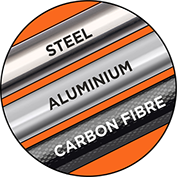
1. CHECK THE MATERIAL
GPAINT is suitable for all frame types including steel, aluminium and carbon fibre.
-
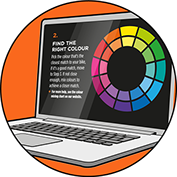
2. FIND THE RIGHT COLOUR
Pick the colour that's the closest match to your bike, if it’s a good match, move on to Step 3. If not, mix colours to achieve a closer match.
• For more help, see our colour
mixing theory examples.
-
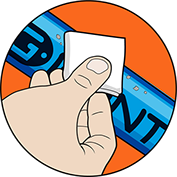
3. CLEAN THE AREA
First remove any dirt, then on metal frames use white Spirit or Acetone to clean away the grease and paint flakes. If you are repairing a carbon frame use White Spirit or Isopropyl Alcohol.
-
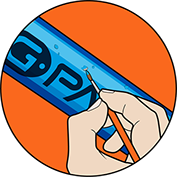
4. APPLY THE PAINT
Use either the paint brush provided, or the fine nib on the bottle and paint a thin layer on to the chip. Allow it to dry for approx 30 mins and if necessary build up the layers gradually. Allow to dry between applications.

GPAINT is available in eight standard colours, each one has been carefully selected based upon the most popular and widely used colours seen in the bike market today. All GPAINT colours can be mixed to create further colour combinations. For example, mix white and red to create pink,or blue and red to create purple etc
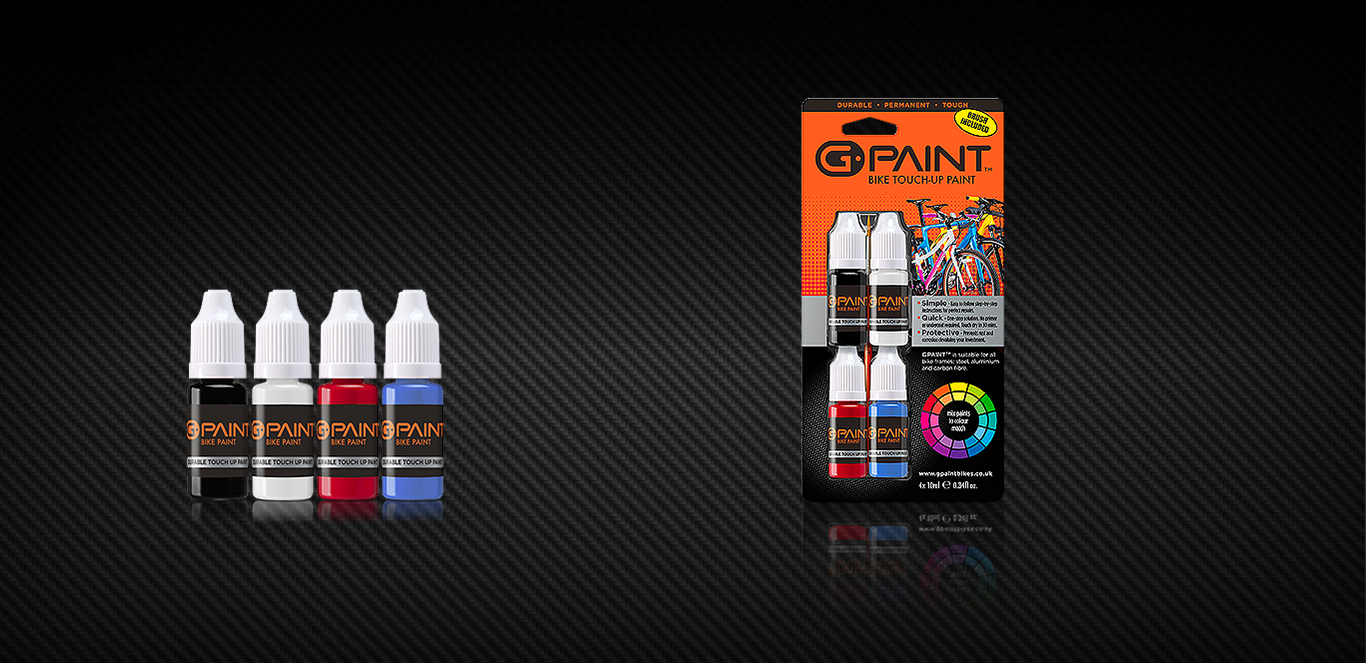
GPAINT is available in eight standard colours, each one has been carefully selected based upon the most popular and widely used colours seen in the bike market today. All GPAINT colours can be mixed to create further colour combinations. For example, mix white and red to create pink,or blue and red to create purple etc
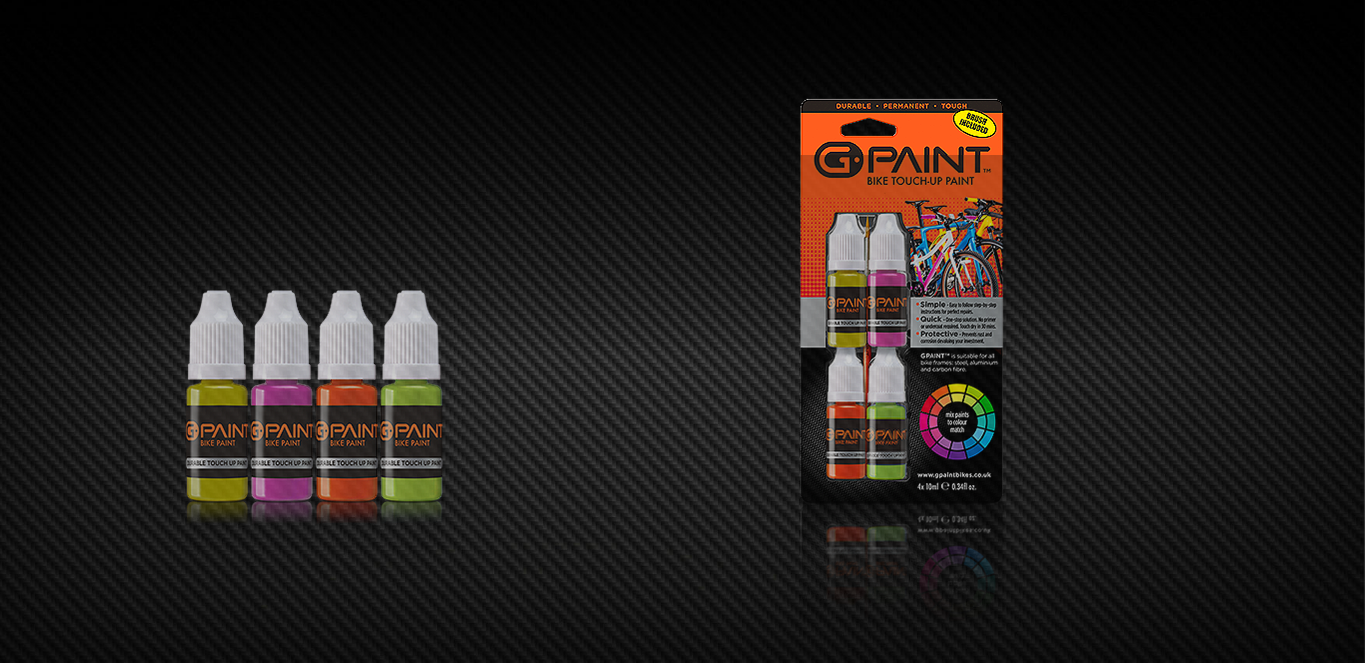
GPAINT is available in eight standard colours, each one has been carefully selected based upon the most popular and widely used colours seen in the bike market today. All GPAINT colours can be mixed to create further colour combinations. For example, mix white and red to create pink,or blue and red to create purple etc
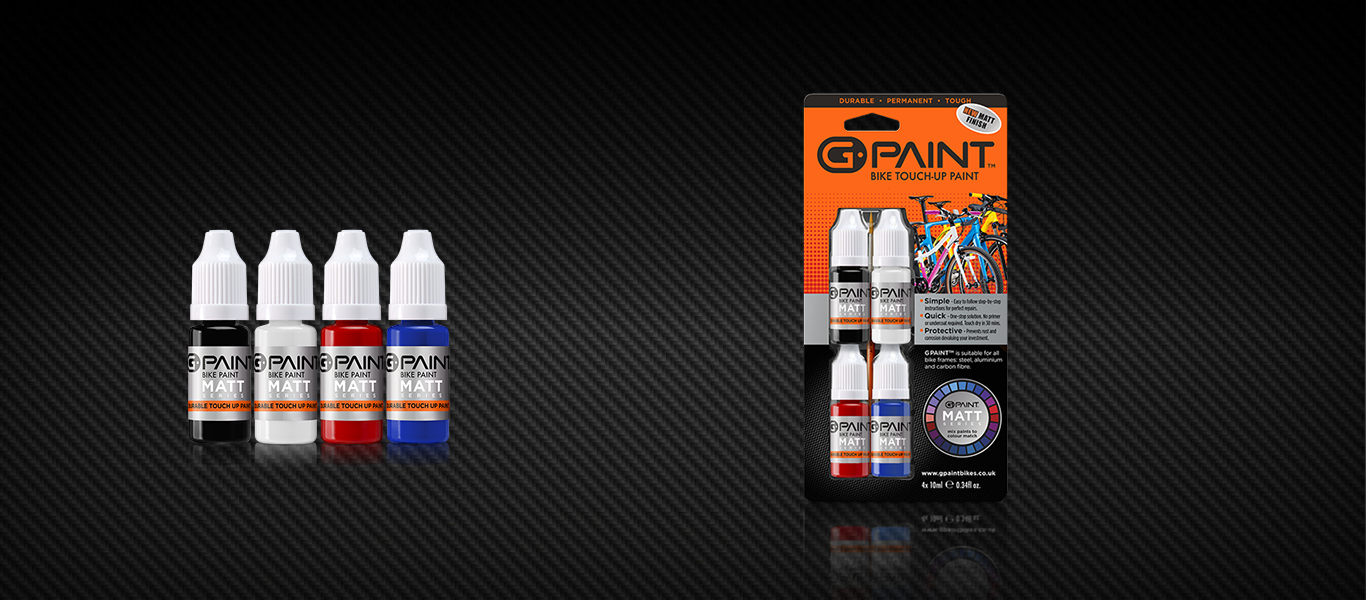
GPAINT is now available in four matt finish colours. These new paints are water-based, which means paints can be thinned and brushes cleaned with water.
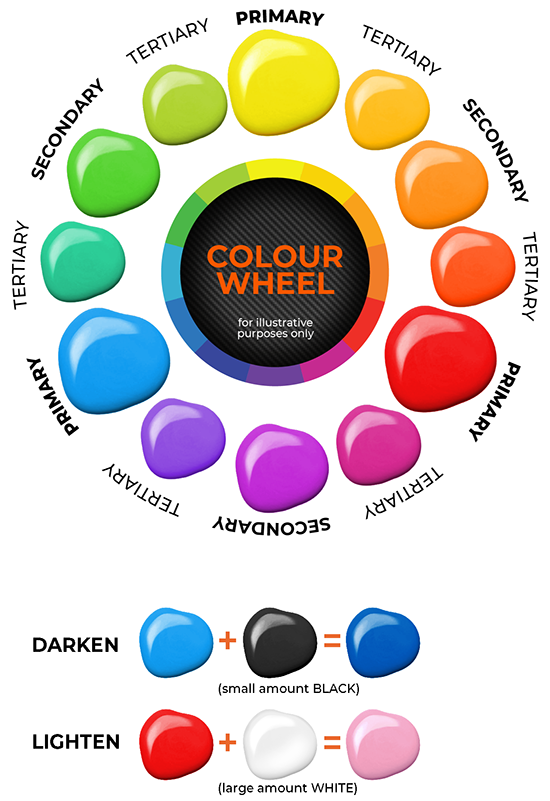
COLOUR MIXING
For beginners, mixing colours might seem quite confusing. However, with a bit of basic colour theory, we can show you tips and tricks to help you match your bike paint.
PRIMARY COLOURS
The three primary colours are: RED, YELLOW and BLUE. These are colours that cannot be created through the mixing of other colours. They are colours in their own right. From these three colours and white, basically, any desired colour can be mixed by yourself.
SECONDARY COLOURS
The secondary colours are in between the primary colours - for example - between red and blue is purple. Quite simply, mixing the primary colours of red and blue paint together will produce the secondary colour purple.
TERTIARY COLOURS
When a primary colour is mixed with its closest secondary colour, a tertiary colour is produced.
When a darker colour is required use a very small amount of black, as this has a dramatic effect on the colour. However, to lighten colours add white, but you will notice you need a lot more to make a difference. If the colour is very light, it is probably better to start with white and slowly add colour to it.
DISCLAIMER: GPAINT: The images of the products on our website are for illustrative purposes only. We have made every effort to display the colours of the paints as accurately as electronic media will allow. However, we cannot guarantee an exact colour match of the on-screen colour to the colours of the actual paints, and the colours contained on the site should not be relied on as such. Colours may vary depending on your screen settings and resolution. We recommend that you try a colour sample on the actual surface to be painted before undertaking your repair.
If you are mixing to match to an existing colour, start using colours as close as possible to the intended final colour. For instance, if matching a purple, magenta and blue may produce a closer colour match than red and blue.




